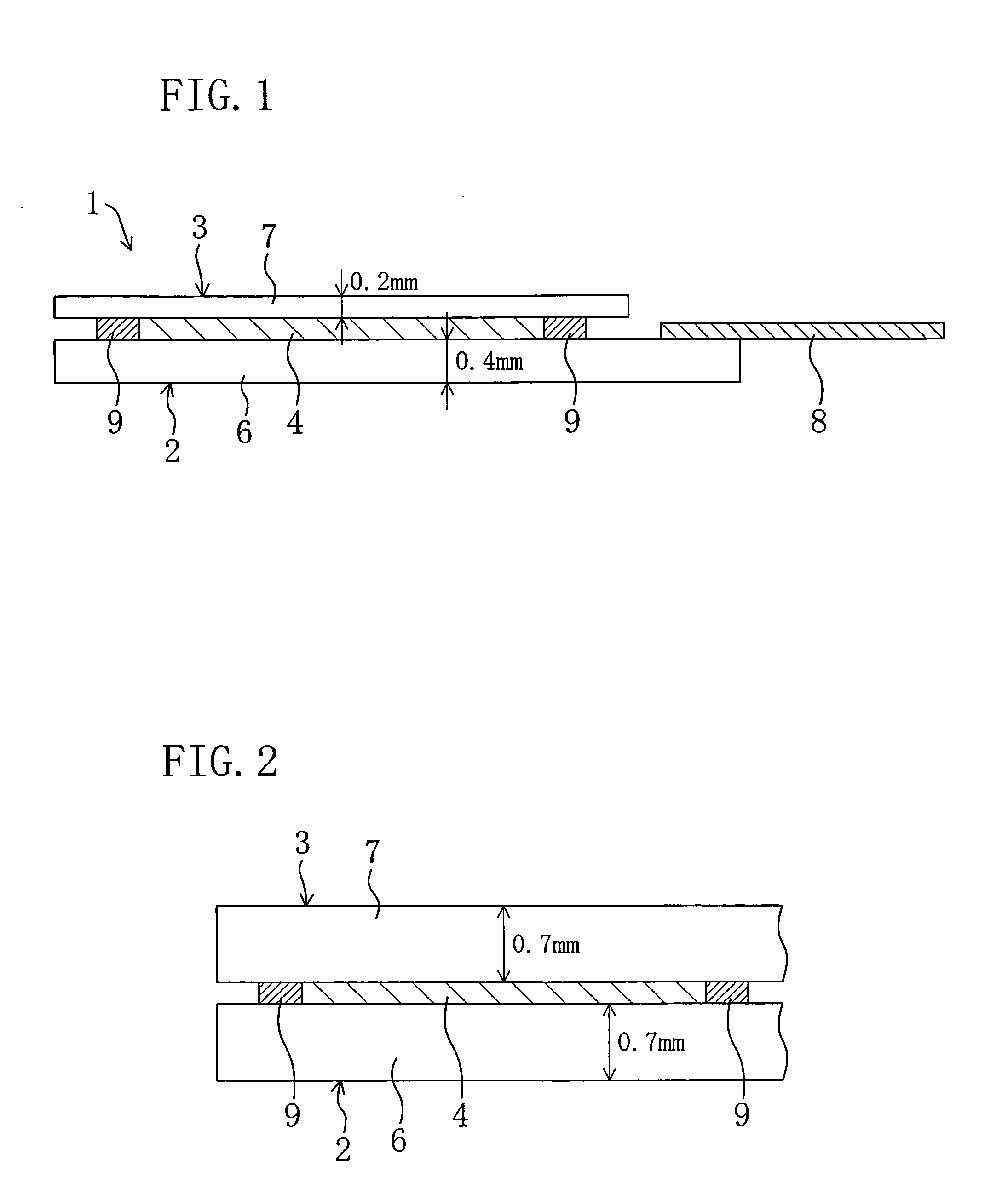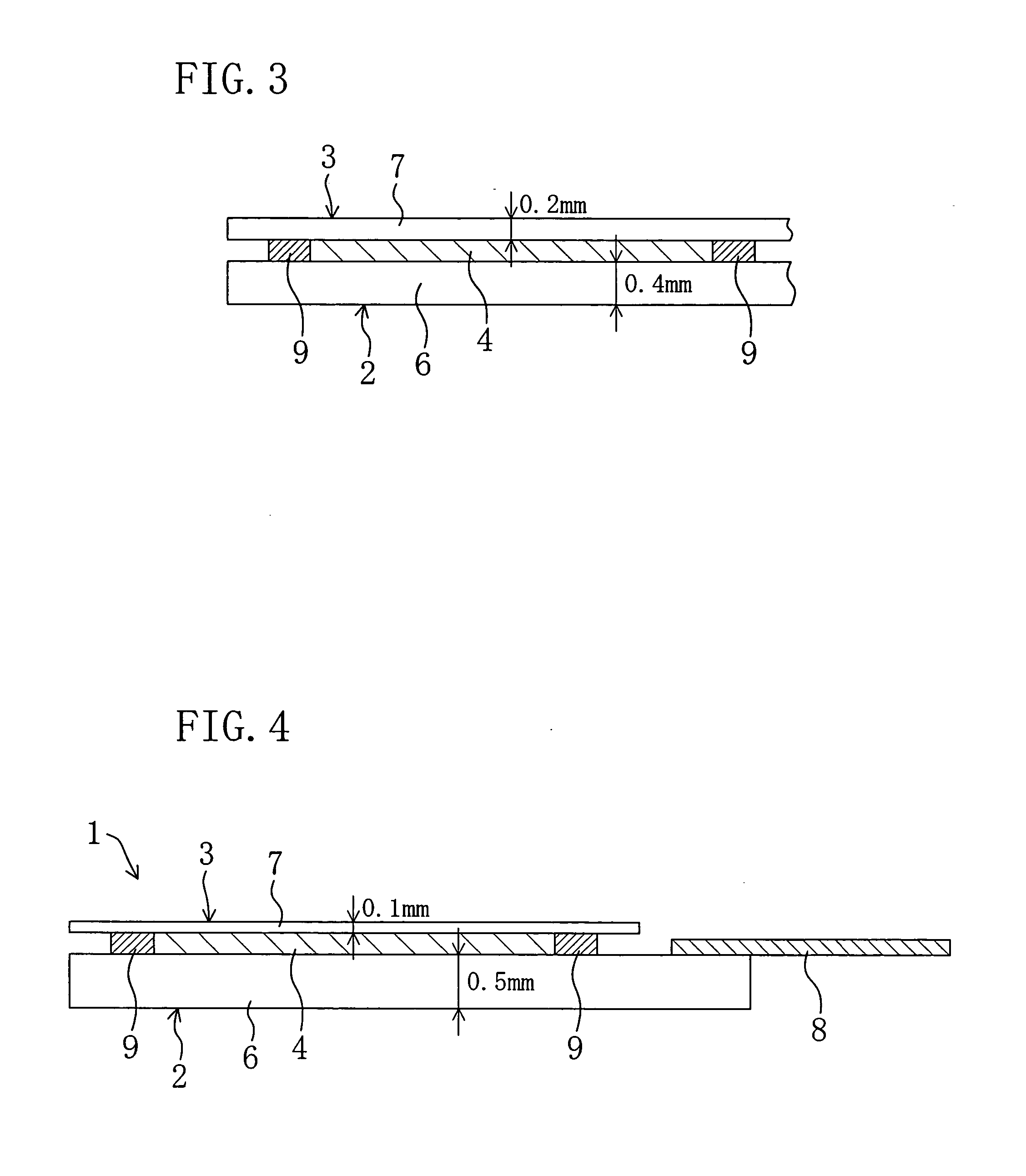Display device and method for manufacturing the same
- Summary
- Abstract
- Description
- Claims
- Application Information
AI Technical Summary
Benefits of technology
Problems solved by technology
Method used
Image
Examples
first embodiment
[0052] FIGS. 1 to 5 show a first embodiment of the present invention.
[0053]FIG. 1 is a sectional view schematically illustrating a liquid crystal display device 1 as a display device of the present invention. As shown in FIG. 1, the liquid crystal display device 1 includes an active matrix substrate 2 as a first substrate, a counter substrate 3 as a second substrate facing the active matrix substrate 2 and a liquid crystal layer 4 as a display medium layer provided between the substrates 2 and 3.
[0054] The active matrix substrate 2 includes a glass substrate 6 and a plurality of thin film transistors (not shown and abbreviated as TFTs) which are formed on the surface of the glass substrate 6 facing the liquid crystal layer 4. The active matrix substrate 2 further includes a plurality of pixels arranged in a matrix. The TFTs are provided on a pixel-by-pixel basis.
[0055] The thickness of the glass substrate 6 is 0.4 mm, for example. An orientation film (not shown) is formed on the ...
example
[0071] Now, an explanation of a specific example of the present invention will be provided.
[0072] A glass substrate A (AN100 manufactured by ASAHI GLASS) was used as the glass substrate 6 of the active matrix substrate 2 and a glass substrate B (1737 manufactured by Corning) was used as the glass substrate 7 of the counter substrate 3. Under certain etching conditions, the etch rate of the glass substrate A is 4.4 μm / min and that of the glass substrate B is 5.2 μm / min.
[0073] Elements such as TFTs and wires were formed on the glass substrate A and a color filter and other elements were formed on the glass substrate B. Then, the glass substrates A and B are bonded together. The bonded substrates were immersed in an etching solution containing hydrogen fluoride under the above-described conditions to etch the substrates for about 42 minutes. As shown in Table 1, the thicknesses of the glass substrates A and B after the 42-minute etching were 0.52 mm and 0.48 mm, respectively.
TABLE ...
second embodiment
[0075]FIG. 6 shows a second embodiment of the present invention. In the following embodiments, the same components as those shown in FIGS. 1 to 4 are indicated by the same reference numerals to omit a detailed explanation.
[0076] A liquid crystal display device 1 of the present embodiment includes an active matrix substrate 2, a counter substrate 3 and a liquid crystal layer 4 as shown in FIG. 6. The active matrix substrate 2 includes a 0.5 mm thick glass substrate 6. The counter substrate 3 includes a 0.1 mm thick plastic substrate 10. In other words, the liquid crystal display device 1 includes the glass substrate 6 and the plastic substrate 10 which is provided to face the glass substrate 6 and thinner than the glass substrate 6.
[0077] In order to fabricate the liquid crystal display device 1 described above, first, in the step of bonding the substrates, a color filter (a coloring layer), TFTs, pixel electrodes, signal wires, scanning wires and a driver which are not shown in th...
PUM
 Login to View More
Login to View More Abstract
Description
Claims
Application Information
 Login to View More
Login to View More - R&D
- Intellectual Property
- Life Sciences
- Materials
- Tech Scout
- Unparalleled Data Quality
- Higher Quality Content
- 60% Fewer Hallucinations
Browse by: Latest US Patents, China's latest patents, Technical Efficacy Thesaurus, Application Domain, Technology Topic, Popular Technical Reports.
© 2025 PatSnap. All rights reserved.Legal|Privacy policy|Modern Slavery Act Transparency Statement|Sitemap|About US| Contact US: help@patsnap.com



